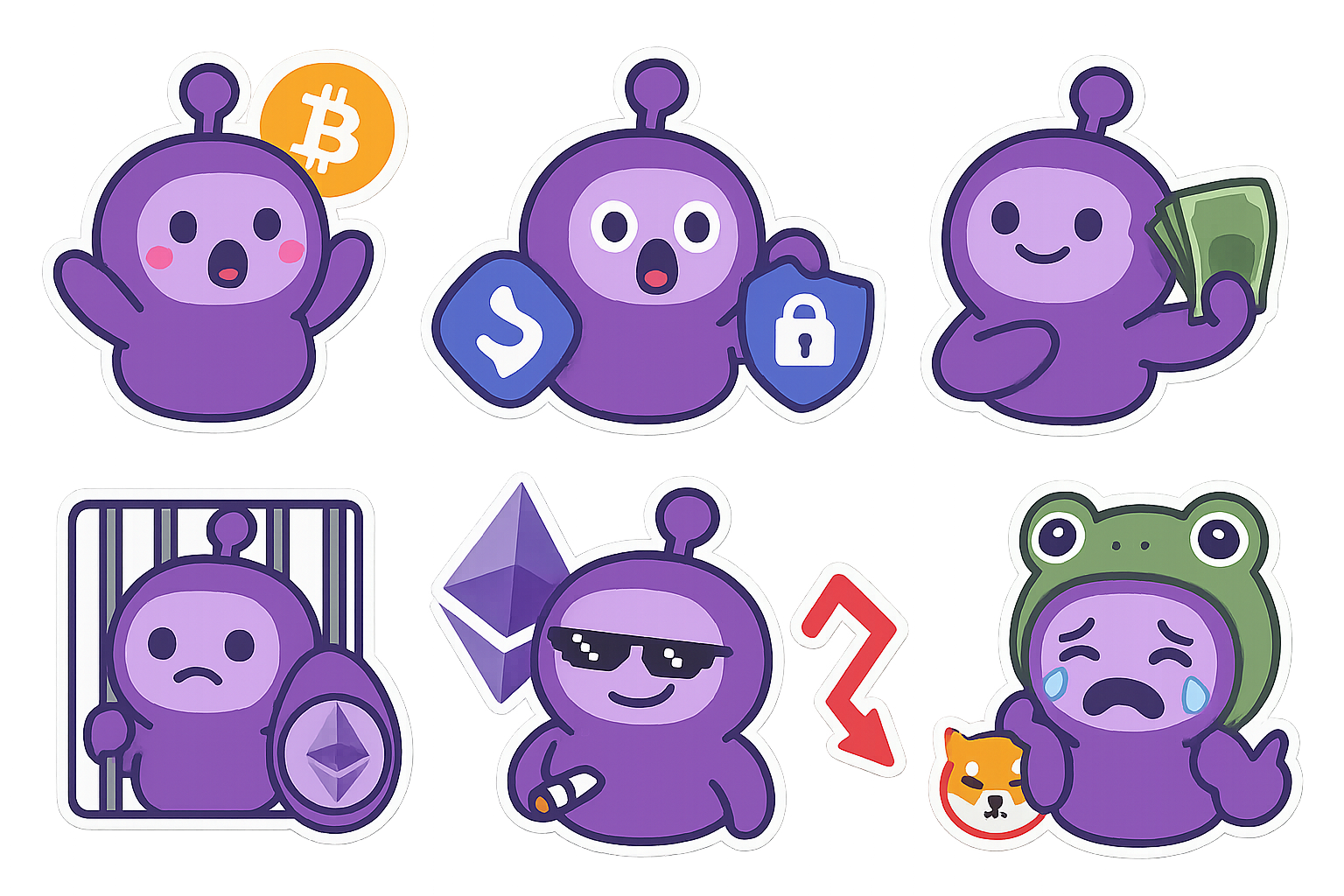Cross-Chain Bridge Guide: How to Swap Tokens Between Blockchains 2024
Cross-Chain Bridge Guide: How to Swap Tokens Between Blockchains 2024
Cross-chain bridging lets you move tokens between different blockchains like Ethereum, Base, Arbitrum, and Polygon. Instead of hours and high fees, modern bridges like EtherHub enable 2-minute swaps for $2-5 total cost.
The Multi-Chain Problem: Why Bridge Tokens?

Before cross-chain bridges, your crypto was trapped on individual blockchains:
- Ethereum: High fees ($20-100) but deepest liquidity
- Base: Cheap fees ($0.50) but money stuck on Ethereum
- Arbitrum: Great DeFi yields but no easy way to move funds
- Polygon: Fast transactions but isolated from other networks
Result: Miss opportunities because your tokens are on the wrong chain.
How Cross-Chain Bridges Work (Simplified)
Think of bridges as automated currency exchanges between blockchain countries:
- Lock tokens on source chain (e.g., lock ETH on Ethereum)
- Mint equivalent on destination chain (e.g., mint ETH on Base)
- Bridge validators verify the transaction is legitimate
- Unlock tokens when you want to bridge back
Security: Reputable bridges use multi-signature validation and time delays to prevent hacks.
Cross-Chain Bridge Comparison: Fees & Speed 2024
| Bridge Route | Time | Cost | Security Rating |
|---|---|---|---|
| Ethereum → Base | 2-7 min | $2-5 | ⭐⭐⭐⭐⭐ |
| Ethereum → Arbitrum | 10-15 min | $5-15 | ⭐⭐⭐⭐⭐ |
| Ethereum → Polygon | 5-10 min | $3-8 | ⭐⭐⭐⭐ |
| Base ↔ Arbitrum | 15-30 min | $8-20 | ⭐⭐⭐⭐ |
Popular Cross-Chain Bridge Platforms 2024
Native L2 Bridges (Safest)
- Base Bridge: Official Coinbase bridge, highest security
- Arbitrum Bridge: Native bridge, 7-day withdrawal period
- Polygon Bridge: Official bridge, plasma security
Third-Party Bridges (Faster)
- Hop Protocol: Fast L2 ↔ L2 bridging
- Across Protocol: Optimistic bridging, 2-hour finality
- Stargate (LayerZero): Omnichain bridge, supports many chains
Bridge Aggregators (Best Rates)
- Li.Fi: Compare all bridge routes
- Socket Protocol: Multi-bridge routing
- EtherHub: One-click automated bridging
Real Example: $1,000 ETH Bridge Costs
Traditional Method (Manual Bridging):
- Time: 2-3 hours total
- Fees: $35-65 (Ethereum gas + bridge fees)
- Steps: 6-8 different actions
- Platforms: 2-3 different websites
- Stress: High (will my money arrive?)
EtherHub Cross-Chain Swap:
- Time: 2-5 minutes
- Fees: $3-8 total
- Steps: 1 click
- Platform: Just EtherHub
- Stress: Zero (automated + insured)
Why Cross-Chain Matters for DeFi 2024
✅ Access Best Yields: Find 15% APY on Arbitrum vs 8% on Ethereum
✅ Optimize Gas Costs: Move to Base for 100x cheaper transactions
✅ Diversify Risk: Don't keep all funds on one blockchain
✅ Arbitrage Opportunities: Profit from price differences between chains
✅ Future-Proof: Easy access to new L2s and blockchains
Common Cross-Chain Use Cases
1. Yield Farming Migration
- USDC earns 5% on Ethereum
- USDC earns 12% on Base
- Bridge instantly for 7% more APY
2. Gas Cost Optimization
- Have $500 on expensive Ethereum
- Need to make 20 DeFi transactions
- Bridge to Base → Save $400 in gas fees
3. Cross-Chain Arbitrage
- ETH costs $2,000 on Ethereum
- ETH costs $1,995 on Arbitrum
- Bridge & profit $5 per ETH
4. L2 DeFi Exploration
- Try new protocols on emerging L2s
- Early LP rewards often highest
- Bridge back if returns diminish
Cross-Chain Security: How to Bridge Safely
✅ Safe Bridging Practices
- Use official bridges for large amounts (>$10k)
- Start with small test transactions ($10-50)
- Verify bridge contract addresses before connecting wallet
- Use reputable aggregators like EtherHub for best routing
⚠️ Bridge Risks to Avoid
- New/unaudited bridges: Higher hack risk
- Cheap bridges with high slippage: Hidden costs
- Long withdrawal periods: Funds locked for days
- Complex multi-step processes: More failure points
The Cross-Chain Nightmare (Before EtherHub)
Moving tokens between chains used to be painful and risky:
- Research which bridge to trust (many have been hacked for millions)
- Navigate complex interfaces with confusing settings and parameters
- Wait 15-45 minutes wondering if your money disappeared
- Pay high fees across multiple platforms and gas costs
- Risk losing funds to user error or bridge exploits
Most people avoided bridging and stayed trapped on expensive chains.
EtherHub: Cross-Chain Made Invisible

EtherHub automates bridge complexity so cross-chain feels like a normal token swap:
🎯 One-Click Bridging: ETH on Ethereum → USDC on Base feels like any token swap
🛡️ Best Bridge Routing: We automatically choose the safest, fastest bridge
⚡ Background Magic: Complex bridging happens behind the scenes
💡 Smart Warnings: Hubi explains any risks before you proceed
🔒 Bridge Insurance: Coverage on supported routes for peace of mind
📊 Real-Time Tracking: Watch your bridge transaction progress live
Instead of becoming a bridge expert, just tell EtherHub your destination—we handle everything else.
Your Cross-Chain Breakthrough with EtherHub
Ready to break free from single-chain limitations?
- Open EtherHub → Select any token on any supported chain
- Pick Destination → Choose where you want tokens to end up
- Review Route → See fees, time, and security score
- Click Bridge → We find optimal path automatically
- Relax & Track → Tokens arrive in 2-5 minutes with live updates
No bridge research, no multiple apps, no stress—just seamless access to all blockchain opportunities.
Pro Cross-Chain Features in EtherHub
Batch Bridging: Move multiple tokens across chains in one transaction
Bridge Limit Orders: "Bridge when ETH hits $1,900 on Arbitrum"
Auto-Rebalancing: Keep portfolio balanced across all chains automatically
Cost Calculator: See total costs before bridging (no surprises)
The multi-chain future is here. With EtherHub, you're no longer limited by which blockchain your money sits on.
Ready to explore DeFi opportunities across all chains? Start your cross-chain journey with EtherHub's automated bridging today.
EtherHub Team
Breaking down DeFi so you can focus on what matters: growing your crypto with clarity and confidence.
Related Articles
EtherHub's 2025 Roadmap: What We've Achieved So Far
From UI/UX foundations to cross-chain swaps, here's what EtherHub has built in 2025—and how we're making DeFi easier, step by step.
Read articlePlans After ETH Global NYC: What's Next for EtherHub
After ETH Global NYC, EtherHub shares key takeaways, community feedback, and why liquidity pool is now a top priority for our upcoming app launch.
Read articleA Guided Tour of EtherHub: How We Make DeFi Simple
Take a visual tour of EtherHub's interface. See how we simplify DeFi with clear risk labels, one-click strategies, and unified portfolio tracking. No more juggling multiple apps.
Read article